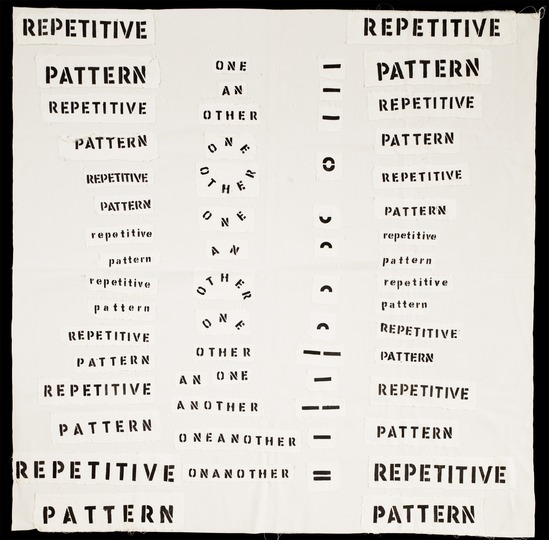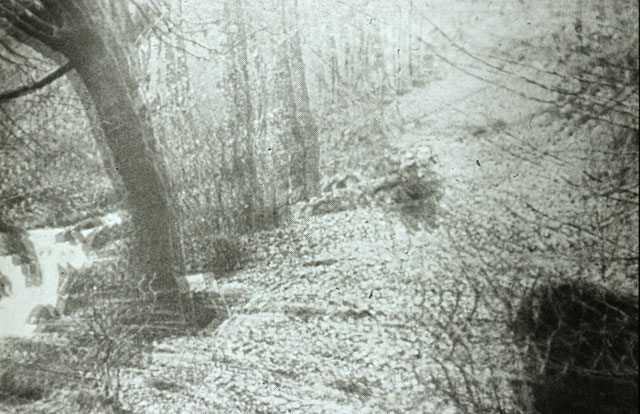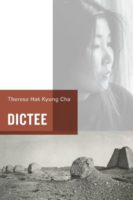OPEN ASSEMBLY
Experiments in Aesthetics and Politics









































Dictation on the Fringes of “Dictee”
Latipa (née Michelle Dizon) – a guest speaker of the ‘Critical Discourse in the Arts and Media’ course, gave a presentation introducing work inspired by Theresa Hak Kyung Cha and her book Dictee.
Coincidentally during this time, I encountered many fragments of both my memory and the collective memory of the family and the nation. I was drawing the connecting lines among them but knowingly cutting off some other historical connections; that is quite similar to what Cha does in the book Dictee. It is the awareness of confusedly encountering the burden of ancestral history on our shoulders, of contemplating and even calculating which memory pieces to put together as our identity, of questioning whether we have the authority to choose or even take over and appropriate such historical fragments. Thus I also step back into the edges of Dictee beyond the main content and look at the periphery in ‘paratext’ – which is next to and surrounding the textual body that Theresa Hak Kyung Cha rigorously orchestrated. At this moment, I would step back to the edge of the overall picture, then try to outline the periphery and simulate a background that the memory debris will later situate.
In Dictee, Cha expands the trope of words and images on the two-dimensional plane of the page, turning them into the reel of fragmented memories that are not clearly defined and recalled. At times they appear specifically someone’s portraits (p.24); at times Chinese calligraphic characters (p.26-27); at times a copy of a scientific image (p.74); at times handwritten manuscript (p.40-41); at times photos historical documents (p.122). It is worth noting that the sequences of these fragments are, most of the time implications, with little or no specific explanation. They may appear unforeseen midst the chapter in a language other than the primary one composed in the book, as shown on page 154. English-speaking readers only recognize numbers from 1 to 10, but characters in a foreign language written in Sumi ink appear as ciphers. But even if such foreign characters are admitted unreadable, we would be curious to investigate whether they are Chinese or Korean characters? The attempt to decipher may go further cryptic when Korean written characters were also developed on the Chinese base. Then, without any preceding hint, on page 173, the readers who know Chinese will realize here the revealing code for page 154. Cha professedly lays the puzzle and the answer, yet she does not point out their connection. Only she, and those who know the code, namely the specific language, can track it down. Like deviations, stumble appears in interpreting efforts among dialogue participants due to inconsistencies from one generation to another, from one culture to another, from one language to another, from one power hierarchy to another. When she constructs the connection between the textual domain and other visual or foreign linguistic signifiers, Cha virtuoso uses the deviation- inconsistency- derailment of interpretation.

Cha places the readers amid incomprehension due to foreign languages, unannotated images, and broken continuity between the textual domain and signifiers. They leave the readers in a state of intermittent mute. That language is not our mother tongue. That image we do not inherit from our history, or we have seen it or were educated about it. Mother tongue, there, the mother is the ancestor, the homeland. Tongue, whose Latin root is ‘lingua’, means language, which the voice conveys via gestures of tongue and palate. Without force, but by crafting the archives of the past, Cha causes our voices to halt. Cha reveals this discontinuity (allow me to creep a little on the textual realm) to the reader in the ‘DISEUSE’ section at the beginning of the book. This monologue describes the difficulty, torment, and suffering of a person who tries her best to make a voice, but her body does not allow it. She is not used to the movements of the tongue and palate and the entire muscles of the shoulder, neck, and face to speak clearly into words. That monologue is a warning from the author that you will be like that when you dive deeper under the pages. That monologue, plus the scene where the reader has difficulty using their memories, knowledge, language, and rational ability, to decipher the book content, is the reenactment of the circumstances that Cha’s characters were narrated in Dictee. They suffer from leaving their homeland or being displaced on their land due to colonialism.
Cha gives several portraits of women throughout the book that appear, of course, without any accompanying captions. Based on the text, readers can guess these characters, such as the Korean revolutionary Yu Guan Soon, Joan of Arc, the author’s mother Hyung Soon Huo, and even the Greek mythic statue as a portrait of Demeter or Persephone. However, there is no self-portrait of Theresa Hak Kyung Cha. When critics consider Dictee an autobiography, these portraits of women are the various identities that Cha finds herself in. But at the same time, this analogy method is also critical of representing and simplifying the Asian woman figure. By overlapping and interlacing many female figures of different countries, races, and times, Cha rejects an easy consumption of symbolic images that the world often imposes on the individual females in foreign countries. As a Korean origin, Cha carries on her shoulders the history of a revolutionary schoolgirl Soon – a worshipping symbol of the Korean national revolution. From Soon the revolutionary figure, Cha is added the history of a female leader of an uprising against foreign invaders like Joan of Arc. Since they both died in the battles, sent to the land of hell, Cha, Soon, and then Joan of Arc carry the mythological image of a woman who was pulled by fate from her motherland, from her mother like Persephone. In the blood, Cha inherits the destiny of her mother. Consequently, as Anne Anlin Cheng analyzes*, the images in Dictee are not exposed to retrieve their historical contextual meaning for the reader to interpret. They are ‘mediated representations’ – both evoking the reader’s consumption and causing them to pause and wonder how these representations work.
Finally, it is impossible not to mention the difference between the first edition drafted by Cha herself and the later edition re-published by the University of California Press. In the original, the book’s cover has a dark reddish-brown background, like soil or the color of dried blood. On that background was a black and white photograph of unknown origin, was it taken by Cha or her brother, James Cha? The picture depicts a landscape scene, a rocky area like a desert, but it can also be the ruins of a particular construction. It contains many mysteries that are difficult to solve, like the puzzle that Cha lays in the book. It does not allow the reader to predict instantaneously what is inside but can only reveal a feeling or a hue of melancholy. In the cover of the reprint, the publisher decided to put Cha’s portrait on. With a ¾ face angle, Cha does not look directly into the lens but looks to the side, creating a sense of separation and distance from the opposite person. Her gaze was downward rather than sideways, her long black hair falling down her cheeks. Beneath the portrait of Cha is a photograph of the desert in the original print. Even though this is the book’s author, putting a picture of a woman of color on the cover immediately creates a pre-set storyline for the character and relies heavily on her facial expression. When Cha put the ‘Dictee’ title on the reddish-brown background with only the ruin photograph, perhaps she intended the readers of the dictation to pick up those pebbles, sand, and broken rocks and try to piece them together in their path of interpretation. The poetic of ambiguity and free dictation lies in the way the readers see her arranging these fragments, and they re-arrange them in their minds. Now, with this revised cover, Cha’s portrait makes us only see her as a whole, seamless image and forget that she did not want to appear all together in front of us like that.
Imagining the Dictee book as an experimental film, we see that the staging ‘paratext’ elements as above analyzed indeed play a significant role in guiding the content and creating formal visual experiments like the art of set design and cinematography. On the other hand, these fringes are scattered throughout the book, with content revealed only to certain communities who know traditional Chinese scripts, are familiar with Korean history, or know the captured location. They appear as clues for some specific communities to dig deeper into the work, but they are simultaneously mysteries to the outsiders. This situation reenacts the fractures in understanding and interpreting signals of socio-cultural-historical memory of displaced communities. Demonstrating this “fringe’ quality without literal narration or explanation is challenging and even more difficult for the book medium. Theresa Hak Kyung Cha bravely experimented with it in the form and content of Dictee, and she succeeded.
Readers can learn more about her works at the exhibition ‘Theresa Hak Kyung Cha: Avant Dictee’ at BAMBFA and the archives of her works, notes, and films at UC Berkeley, Berkeley Art Museum, and Pacific Film Archive.

*: Cheng, Anne Anlin. “Memory and Anti-Documentary Desire in Theresa Hak Kyung Cha’s Dictée.” MELUS 23, no. 4 (1998): 119–33. https://doi.org/10.2307/467831.
Acknowledgment: I thank Michael Leong for his term ‘fringe as paratext’ that inspires me to crystalize my ideas for this essay.

